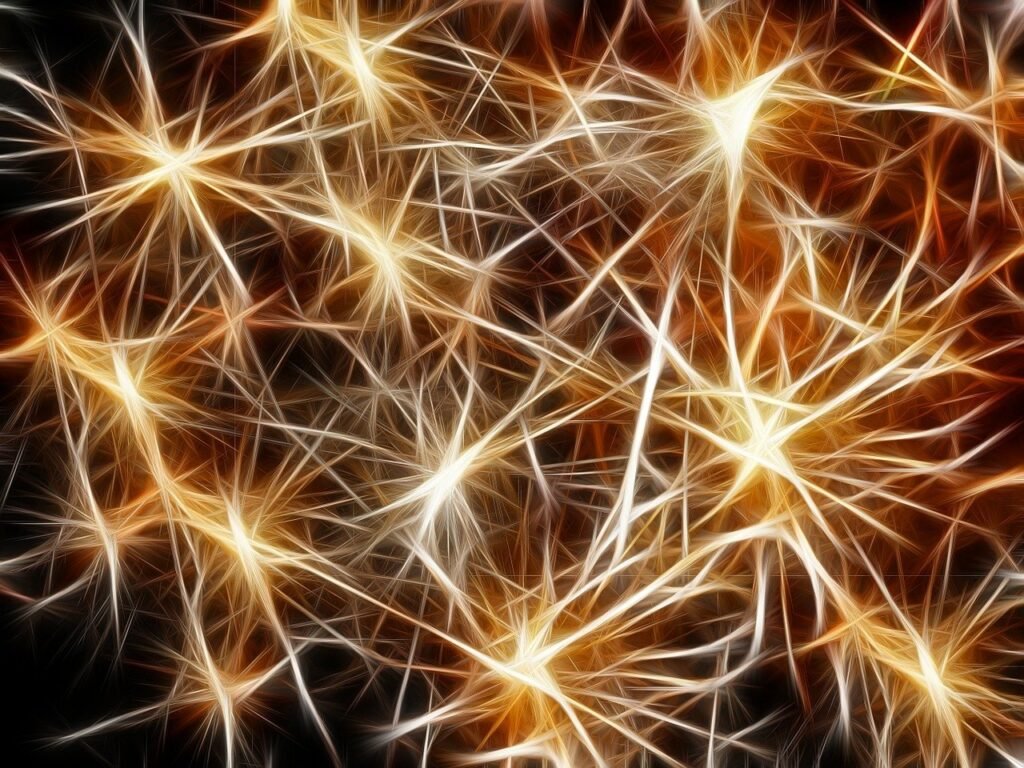What is a Vestibular Migraine? Understanding how vestibular migraine and POTS are connected can be life-changing for individuals dealing with unexplained dizziness, brain fog, vertigo, and autonomic imbalance. Let’s explore this complex relationship and how recognizing it can guide more targeted treatments and lifestyle approaches. Living with either Postural Orthostatic Tachycardia Syndrome (POTS) or vestibular migraine is challenging enough—but for many, these two conditions don’t just coexist, they intertwine.
Understanding Vestibular Migraine
Vestibular migraine is a neurological condition that affects the balance systems in the brain. While it shares traits with traditional migraine, its hallmark symptom is vertigo—a spinning sensation not necessarily accompanied by head pain.
Common Symptoms of Vestibular Migraine
- Spontaneous or positional vertigo
- Dizziness, lightheadedness
- Motion sensitivity
- Imbalance or unsteadiness
- Nausea, visual disturbances
- Occasional headache or aura
Unlike classic migraine, vestibular migraine symptoms can occur without head pain, making it harder to diagnose. Episodes may last minutes to days and often overlap with sensory sensitivity, sound intolerance, and fatigue.
What is your goal with salt intake for your POTS?
What is POTS?
POTS is a form of dysautonomia, a disorder of the autonomic nervous system. It typically presents as excessive heart rate increase upon standing, often alongside fatigue, lightheadedness, gastrointestinal issues, and brain fog.
Core POTS Symptoms
- Increased heart rate >30 bpm upon standing
- Dizziness and fainting
- Chronic fatigue
- Cognitive difficulties (“brain fog”)
- GI symptoms (nausea, bloating, etc.)
- Sensory sensitivity
- Intolerance to heat or exertion
POTS is often misunderstood, misdiagnosed, or mistaken for anxiety, making advocacy and education critical.
The Overlap Between Vestibular Migraine and POTS
Here’s where things get interesting: both vestibular migraine and POTS appear to stem from autonomic nervous system dysfunction, which governs processes like blood pressure, heart rate, and balance regulation.
Shared Features and Mechanisms
- Dizziness and Vertigo: Both conditions can cause intense dizziness, often triggered by standing, moving, or sensory stimuli.
- Sensory Sensitivity: POTS patients frequently experience light and sound sensitivity—core features of vestibular migraine.
- Fatigue and Brain Fog: Both conditions disrupt blood flow and neurological signaling, contributing to cognitive exhaustion.
- Hormonal & Immune Influences: Fluctuations in estrogen, immune activation, and inflammation play roles in both conditions, especially among women.
- Vascular Dysregulation: Migraine is tied to blood vessel changes; POTS involves poor vascular response to orthostatic stress.
Recognizing how deeply these conditions interlace allows for more nuanced care—especially since standard migraine treatments may worsen POTS, and vice versa.
Why Diagnosis Can Be Tricky
Symptoms from both disorders often mimic each other. Patients may go years without accurate diagnoses, dismissed as having panic disorder, chronic fatigue, or “just stress.” For example:
- Vestibular migraine might be labeled as inner ear dysfunction.
- POTS might be confused with anxiety or panic attacks.
Medical professionals well-versed in autonomic disorders and migraine variants are crucial for proper evaluation.
Lifestyle Management Strategies for Vestibular Migraine and POTS
Managing vestibular migraine and POTS often requires a multifaceted lifestyle approach that goes beyond medication. Daily choices—from hydration to diet to sleep—can dramatically impact symptom severity and episode frequency. Here’s how to build a foundation of habits that support both autonomic balance and neurological stability.
Hydration and Salt Intake
For individuals with POTS, maintaining blood volume and circulatory stability is essential. Increasing fluid intake—aiming for at least 2–3 liters per day—and boosting sodium consumption (if advised by your doctor) can help reduce lightheadedness, improve stamina, and lessen orthostatic intolerance.
- Try electrolyte drinks without artificial sweeteners, which may trigger migraines.
- Include natural sodium sources such as broth, pickles, or salted nuts.
- Monitor daily fluid intake using water tracking apps or refillable bottles.
Trigger Avoidance: Foods, Stress, and Environmental Factors
Avoiding vestibular migraine triggers means identifying personal sensitivities that provoke episodes. For many, foods play a significant role. Here are common dietary culprits:
⚠️ Foods That May Trigger Vestibular Migraine
- Aged cheeses (e.g. parmesan, brie): Contain tyramine, a migraine trigger.
- Processed meats (e.g. salami, bacon): High in nitrates and preservatives.
- Chocolate: Contains caffeine and phenylethylamine.
- Red wine and alcohol: Vasodilators that can disrupt autonomic balance.
- Citrus fruits: Often problematic for sensitive individuals.
- MSG and artificial additives: Common in packaged snacks and takeout.
- Fermented foods: Like sauerkraut or soy sauce, may cause flare-ups in some.
- Histamine-rich foods
Identifying your personal triggers may require using a food and symptom diary. Keeping track of meals alongside dizziness or migraine episodes can help pinpoint patterns. Elimination diets guided by a specialist can also offer clarity.
Stress Management and Nervous System Support
Stress is a major aggravator for both vestibular migraine and POTS, increasing sympathetic nervous system activation and inflammation. Incorporating calming techniques can help regulate your baseline autonomic tone:
- Deep breathing and paced respiration
- Gentle yoga or stretching routines
- Guided imagery or meditation
- Consistent routines that reduce sensory surprises
Avoid overstimulation from loud environments, scrolling late at night, or multitasking during flares. Creating a calming corner or “low-sensory” zone in your home can help with recovery during episodes.
Sleep Hygiene
Consistent, quality sleep helps stabilize neurological function, reduce migraine frequency, and support autonomic recovery. Both vestibular migraine and POTS are worsened by sleep disturbances, so focus on:
- Maintaining a regular sleep schedule—even on weekends
- Limiting screen time and blue light exposure before bed
- Keeping the bedroom cool, dark, and quiet
- Using white noise or gentle sound apps to block disruptive noise
- Avoiding late-night food triggers (especially chocolate, wine, and cheese)
If you’re waking with dizziness, vertigo, or headaches, consider sleep position and bedding—some individuals are sensitive to head angle or pressure on the neck.
Medications to Consider (Under Medical Supervision)
Treatment options for individuals navigating both vestibular migraine and POTS must be approached carefully. Many medications can help regulate the autonomic nervous system, reduce migraine frequency, and support neurological stability—but some may also exacerbate symptoms if not matched to individual needs. Below is an overview of commonly considered options, tailored to the dual-diagnosis context:
Beta Blockers
Beta blockers such as propranolol or metoprolol are often prescribed for both migraine prevention and heart rate regulation in POTS. These medications work by dampening the sympathetic nervous system, reducing adrenaline’s effects, and helping the body maintain steadier cardiovascular rhythms. While effective for many, beta blockers may cause fatigue or cold extremities—especially in those with low blood pressure.
Tricyclic Antidepressants (TCAs)
TCAs like amitriptyline or nortriptyline have been used for decades to treat neurological conditions. They offer pain modulation, reduce migraine occurrence, and support autonomic stability by influencing neurotransmitter levels like serotonin and norepinephrine. TCAs may be particularly helpful in treating chronic dizziness, nerve pain, and sleep disturbances—common in both POTS and vestibular migraine. However, they can have anticholinergic side effects such as dry mouth or constipation.
Anticonvulsants & Calcium Channel Blockers
Some anticonvulsant medications (like topiramate or valproate) help stabilize electrical activity in the brain and are frequently used to prevent migraines. For patients with vestibular sensitivity, these can reduce the sensory overload that often triggers vertigo episodes.
Calcium channel blockers (like verapamil) are another option—particularly effective for those with vascular-related migraine symptoms. They help relax blood vessels and regulate blood flow, which may ease both migraine and POTS symptoms stemming from circulatory instability. Dose titration is crucial here, as excessive drops in blood pressure can worsen orthostatic intolerance.
SSRI and SNRI Antidepressants
Selective Serotonin Reuptake Inhibitors (SSRIs) and Serotonin–Norepinephrine Reuptake Inhibitors (SNRIs), such as fluoxetine, sertraline, or duloxetine, can support autonomic regulation by improving neurotransmitter balance in the central nervous system. These may also help with the anxiety, depression, or sensory processing challenges that often accompany vestibular migraine and POTS.
For patients with overlapping emotional and physical symptoms, these antidepressants can offer powerful relief. However, their impact on blood pressure, heart rate, and digestive function varies—so careful monitoring is essential.
Abortive Treatments (Taken During an Episode)
When either vestibular migraine or POTS-related vertigo strikes suddenly, having effective abortive therapies—those taken during the acute phase—can make a critical difference. While these medications won’t prevent future episodes, they can help manage symptoms in real time, reduce discomfort, and potentially shorten the duration of an attack.
Triptans (e.g. Rizatriptan)
Triptans are a class of migraine-specific medications that work by constricting dilated blood vessels and reducing neuroinflammation. Drugs like rizatriptan, sumatriptan, or eletriptan show promise in early studies for vestibular migraine relief, particularly in attacks with typical aura or head pain. However, triptans may pose risks for individuals with vascular sensitivity, common in POTS, so they should be used cautiously and under supervision.
Patients with hypertension, tachycardia, or a history of circulatory issues should consult a physician before use. Timing matters too—triptans are most effective when taken early in the migraine episode.
NSAIDs (e.g. Ibuprofen)
Nonsteroidal anti-inflammatory drugs (NSAIDs) like ibuprofen, naproxen, or aspirin are widely used for pain relief and inflammation control. For vestibular migraine, they can help reduce the severity of head pain, pressure sensations, and overall malaise. Some POTS patients may find NSAIDs beneficial for joint pain or muscle soreness, although gastrointestinal sensitivity is common.
Be mindful of dosage frequency and stomach protection strategies, especially if you’re taking multiple medications or managing digestive issues related to autonomic dysfunction.
Motion Sickness Medications (e.g. Meclizine)
For acute vertigo episodes, motion sickness drugs like meclizine, diphenhydramine, or promethazine can help calm the vestibular system. They work by suppressing activity in the brain’s balance centers, reducing nausea, motion sensitivity, and spinning sensations.
These medications are best used sparingly, as frequent use may lead to drowsiness, dry mouth, or cognitive dulling—especially risky in people already experiencing POTS-related brain fog. Many patients benefit from as-needed dosing during severe flare-ups or travel.
💊 Comparison of Medications for Vestibular Migraine and POTS
| Medication Type | Examples | Usage | Helps With | Cautions / Notes |
|---|---|---|---|---|
| Beta Blockers | Propranolol, Metoprolol | Daily preventive | POTS heart rate control, migraine prophylaxis | May worsen fatigue or low blood pressure |
| Tricyclic Antidepressants | Amitriptyline, Nortriptyline | Daily preventive | Pain regulation, dizziness, autonomic support | Dry mouth, constipation, dosage titration needed |
| Anticonvulsants | Topiramate, Valproate | Daily preventive | Vestibular sensitivity, migraine episodes | Cognitive effects, risk of weight changes |
| Calcium Channel Blockers | Verapamil | Daily preventive | Migraine prevention, vascular stability | May lower blood pressure, adjust slowly |
| SSRI / SNRI Antidepressants | Fluoxetine, Duloxetine | Daily preventive | Mood regulation, autonomic support | Monitor for orthostatic changes, GI side effects |
| Triptans | Rizatriptan, Sumatriptan | Abortive – during attack | Migraine relief, some vestibular symptoms | Avoid in POTS with vascular issues; use early in migraine onset |
| NSAIDs | Ibuprofen, Naproxen | Abortive – during attack | Pain, inflammation, pressure sensations | GI sensitivity, avoid excessive use |
| Motion Sickness Meds | Meclizine, Diphenhydramine | Abortive – as needed | Acute vertigo, nausea, sensory overload | Sedation, brain fog intensification with frequent use |
Navigating Daily Life with Dual Diagnosis
Balancing both conditions takes careful tracking and personalized adjustments. A digital symptom journal or visual timeline (like a flare tracker) can help spot correlations between vertigo, heart rate spikes, sensory triggers, and fatigue.
Practical Tips
- Break tasks into smaller chunks to manage energy.
- Use cooling gear during warm weather.
- Experiment with anti-glare glasses or noise-reduction earbuds.
- Build a care team including neurologists, cardiologists, and physical therapists familiar with both conditions.
Peer communities and blogs—like the one you might be building—are a lifeline for validation, ideas, and support.
Vestibular Treatment Therapies
For individuals experiencing vertigo, dizziness, and imbalance due to vestibular migraine (and overlapping POTS symptoms), non-pharmacological therapies can be transformative. These approaches focus on retraining the brain and body’s balance systems, reducing sensitivity to motion, and improving overall physical stability.
Vestibular Rehabilitation Therapy (VRT)
VRT is a targeted physical therapy designed to improve vestibular function and compensation. It involves:
- Gaze stabilization exercises to train eye and head coordination
- Habituation drills to reduce motion-triggered symptoms
- Balance training using static and dynamic activities
This therapy works by desensitizing the brain to problematic stimuli, helping recalibrate the inner ear and central nervous system responses. For patients with both vestibular migraine and autonomic dysfunction, VRT can reduce dizziness, fall risk, and sensory overload.
Neurological Physical Therapy
Unlike standard PT, neurological PT focuses on central integration between the brain, nerves, and muscles. It can help restore posture and coordination in those with autonomic instability from POTS and vestibular dysfunction. Therapists may use:
- Proprioceptive training to improve body awareness
- Core strengthening to support orthostatic tolerance
- Desensitization work for those sensitive to light, sound, or motion
These modalities are often layered gradually, respecting the patient’s threshold and avoiding exacerbation.
Cognitive Behavioral Therapy (CBT)
For individuals experiencing chronic vestibular symptoms, CBT can help reframe anxious responses to dizziness and reduce the psychological impact of unpredictable episodes. Since both vestibular migraine and POTS share ties to sensory hypersensitivity, CBT offers coping mechanisms to reduce panic, anticipatory anxiety, and mental fatigue.
Complementary Approaches
Some patients report benefit from acupuncture, craniosacral therapy, or yoga therapy, especially when tailored for neurological balance and autonomic support. These may help:
- Promote parasympathetic activation (rest-and-digest)
- Ease head pressure, neck stiffness, and tension patterns
- Improve body-brain communication through gentle movement
While research is mixed, these can be valuable adjuncts to clinical therapies, especially for sensitive individuals seeking holistic support.

GnarlyTree | PERSONAL STORIES WITH POTS
Art Therapy for Chronic Illness | How Creativity Became My Lifeline with POTS, EDS, and Neurological Challenges
Discover how Art Therapy for Chronic Illness helps me cope with POTS, EDS, PPPD, and neuropathy. A personal story of resilience through painting, music, and digital creativity.
Frequently Asked Questions
What is the main difference between vestibular migraine and POTS?
Vestibular migraine is a neurological condition centered around balance and vertigo, while POTS is an autonomic disorder affecting heart rate and circulation.
Can vestibular migraine cause heart rate changes like POTS?
Not directly, but sensory overload and autonomic disruption from migraine can mimic or intensify POTS symptoms.
Are vestibular migraine and POTS both chronic conditions?
Yes, although severity can vary over time and with lifestyle, hormonal changes, or treatment approaches.
Is there a shared cause between vestibular migraine and POTS?
While not definitively known, both may stem from autonomic nervous system dysfunction, hormonal sensitivity, or immune dysregulation.
What tests can confirm vestibular migraine or POTS?
Vestibular migraine is often diagnosed clinically, while POTS diagnosis relies on tilt table tests or active stand tests tracking heart rate and blood pressure.
Will migraine medications help POTS symptoms?
Some overlap, but others may worsen symptoms; treatment must be carefully balanced.
Can stress make both vestibular migraine and POTS worse?
Absolutely—stress is a major exacerbating factor for both due to its impact on the nervous system and inflammation.
Are women more likely to have vestibular migraine and POTS?
Yes, due to hormonal influences and higher rates of autonomic disorders among females.
Is dizziness from POTS different than vestibular migraine?
Dizziness in POTS is often related to blood flow and standing, whereas vestibular migraine causes vertigo from sensory imbalance.
Should both conditions be treated at once?
Yes, an integrated approach helps avoid medication conflicts and improves overall quality of life.
Final Thoughts
Understanding the connections between vestibular migraine and POTS isn’t just a matter of medical curiosity—it’s crucial for anyone living with either (or both) of these misunderstood conditions. By recognizing their shared mechanisms and overlapping symptoms, patients can pursue treatment paths that honor the full complexity of their experience.
Empowering yourself with knowledge, building a support system, and seeking out clinicians familiar with autonomic and migraine disorders can make a profound difference. Whether you’re just starting to untangle your symptoms or you’re refining your flare management strategy, clarity is within reach.




